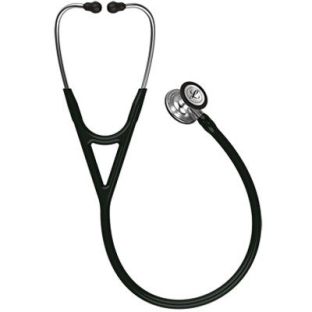For all the advances in medical diagnostics made over the last two centuries of modern medicine, from the ability to peer deep inside the body with the help of superconducting magnets to harnessing the power of molecular biology, it seems strange that the enduring symbol of the medical profession is something as simple as the stethoscope. Hardly a medical examination goes by without the frigid kiss of a stethoscope against one’s chest, while we search the practitioner’s face for a telltale frown revealing something wrong from deep inside us.
The stethoscope has changed little since its invention and yet remains a valuable if problematic diagnostic tool. Efforts have been made to solve these problems over the years, but only with relatively recent advances in digital signal processing (DSP), microelectromechanical systems (MEMS), and artificial intelligence has any real progress been made. This leaves so-called smart stethoscopes poised to make a real difference in diagnostics, especially in the developing world and under austere or emergency situations.
The Art of Auscultation
Since its earliest appearance in 1816 as an impromptu paper cone rolled by Dr. René Laennec, partly to protect the modesty of his female patients but also to make it possible to listen to the heart sounds of an obese woman, designs for stethoscopes have come to the familiar consensus configuration: a chest piece, a pair of earpieces, and a tube or tubes connecting them. The chest piece consists of either a broad, thin diaphragm or an open-ended bell, while the earpieces are designed to fit snugly into the practitioner’s ears under light spring pressure to occlude as much environmental noise as possible.
The chest piece is pressed directly against the patient’s body and acts as an impedance matcher that couples faint vibrations from the watery interior to the air outside. The column of air in the tubing connected to the chest piece conducts vibrations up to the earpieces and onto the eardrums of the practitioner. Medically, the process is referred to as auscultation, and though the sounds thus heard are faint and often coupled with noise both from inside and outside the patient, with practice they can help paint a surprisingly complete diagnostic picture.
While auscultation is used for sounds generated all over the body, it’s mostly used for sounds made in the chest by the heart and by the lungs. The choice of which chest piece to use depends on which the frequency of the sounds that need to be heard. Lung sounds are generally of higher pitch, in the range of 200 to 2,000 Hertz, as air vibrates over and around the structures of the respiratory tract. The diaphragm chest piece is usually used for these sounds, with the thin, taut disc collecting sound over a wide area and coupling as much acoustic energy as possible up to the earpieces. Heart sounds are generally lower pitched, between 20 and 200 Hertz, and are caused by the turbulence of blood …read more
Source:: Hackaday

